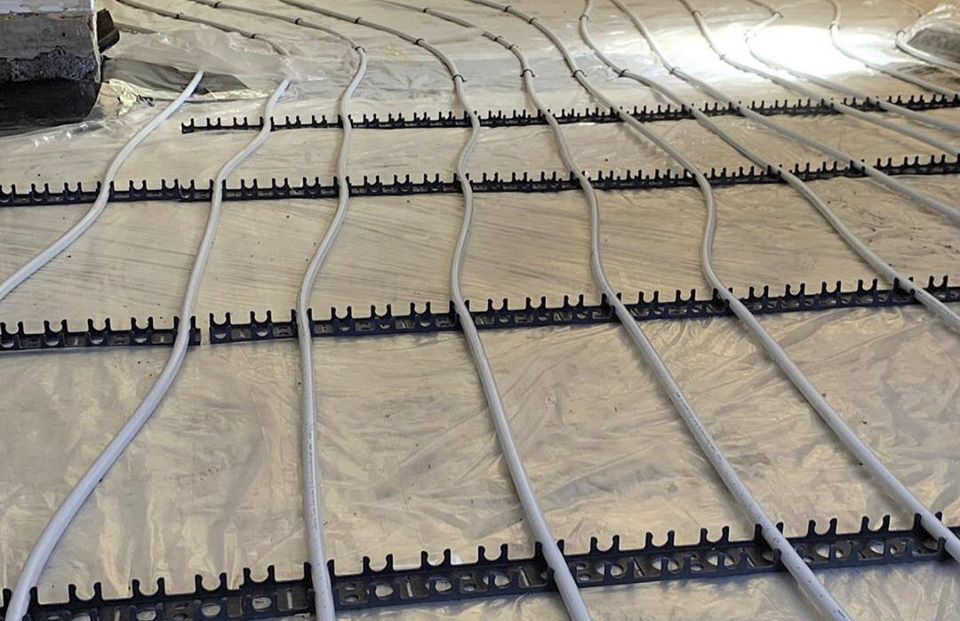
Guide to Buying Underfloor Heating
What is Underfloor Heating?
Underfloor heating is a system that converts your floor into a radiator – regulating heat. They work well with already installed boiler system or newer technologies such as heat pumps and solar panels.
Underfloor heating systems work based on conduction and radiation of heat models. By conduction, heat moves from the heating pipes to the floor coverings before heating up. And escapes by radiation into your room.
Read on for more information from choosing between the available types of underfloor heating to discovering the floor coverings perfect for you.
Wet Underfloor Heating Systems vs. Electric Underfloor Heating
There are majorly two types of underfloor heating namely electric (or dry) heating and wet (or Hydronic) underfloor systems. Although both systems are suitable for installation in new builds, the water system is most popular while the electric may be a better choice if you’re considering a renovation.
Wet Underfloor Systems
Wet, also called Hydronic Heating Systems, use water for heating. Usually, they have a system of pipes connected to your boiler system to get hot water supply or from newer standard technologies, such as heat pumps or solar thermal energy. In other words, they depend on the supply from your boiler system. in effect, you can spend less on running the wet underfloor heating when compared to the electric underfloor systems.
Water from the supply flows through plastic pipes fitted to a sub-floor construction, installed prior to the new final surface. Thereby providing an eco-friendly heating solution.
A major turnoff with this type of underfloor system is that they can be expensive to install. And in addition to taking more time to set up, you would be required to refit your sub-floor. However, they are more appreciable in new build projects.
Electric Underfloor Systems
Also known as Dry Underfloor Heating, are usually cheaper to install than Water underfloor systems. Instead of connected pipes, they have a roll of cable fitted beneath the floor covering that radiates heat up into your room when they heat up.
While it can be installed yourself directly on existing flooring, it’s always recommended to have an experienced electrician configure the systems for you. Electric underfloor heating systems are the most popular option for retrofitting builds since their heating cables can be as little as 2mm in thickness.
One of their advantages over water underfloor systems is their ability to heat up faster.
Electric Heating systems are the right choice for you when you have plans to have an eco-home; one powered by electricity generated from solar panels or wind turbines. Also, they are mostly preferred to water underfloor if one is renovating a project.
Which Floor Coverings Will be Good for me?
Generally, undercover heating works with all floor types ranging from carpet, vinyl, stone or terracotta. An exception to this rule is a wooden floor unless specified by the manufacturer.
Usually, when considering using a wooden floor, it must be used with a temperature restriction of 27oC and an expansion gap must be considered too around the edges.
Benefits of Underfloor Heating?
- Gives Comfort – the only heating solution that can warm the floor and at the same time, your room. Also, they provide a better heating environment with their radiator systems.
- Efficient and Easy Control – underfloor systems are very efficient in operation since they use conduction and radiation modes of heat transfer. Also, they can be controlled easily thereby offering you the flexibility to heat only the rooms you need per time. Ultimately, saving you a dime.
- They give you total flexibility in your home decoration as they care neatly fitted underneath the floor.
- Health & Safety – they are generally safe to use. They do not get exposed to dust, and so cannot cause health-related issues such as asthma.
- It requires little or no maintenance.
